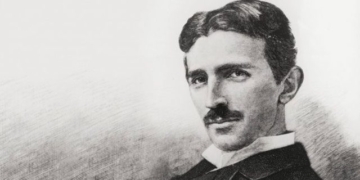Inflicting harm or causing someone physical and emotional pain is a cruel and unacceptable act. Yet, it happens daily in our lives.
Reasons Why People Treat Each Other Cruelly
This article published on BBC Future by Simon McCarthy-Jones, an associate professor of clinical psychology and neuropsychology at Trinity College Dublin, explains this phenomenon.
The French philosopher Blaise Pascal summarized in 1658: “Man is both the glory and the scum of the universe.” We love and we hate. We know how to help, yet we also harm. We extend our hands, but we can also stab with a knife.
We understand that if someone attacks, it is often in retaliation or self-defense. But when someone harms an innocent person, we cannot help but ask: “How can they do this?”
People often do things to gain pleasure or to avoid pain. For most of us, accidentally hurting someone else causes us pain as we empathize with their suffering. This indicates two reasons why someone might harm an innocent person—they either do not feel the pain of others or they enjoy feeling the pain of others.
Another reason someone might harm an innocent is due to a perceived threat. Someone who does not invade your physical space or wallet may still threaten your social status. This helps explain other puzzling behaviors, such as when someone harms those who financially support them.
The notion that causing others pain means we have harmed them has been prevalent throughout history. However, a question arises in the 21st century: can we conceptualize living cruelly to become kind?

Most people hesitate when it comes to torturing others, mainly because when we harm others, we share some of that pain. (Source: Alamy).
Sadists and Psychopaths
A person who derives pleasure, sometimes sexual satisfaction, from hurting or humiliating others is known as a sadist. Sadists feel the pain of others more than the average person, and they enjoy it.
The common perception often links sadism with torturers and murderers. However, in reality, everyday sadism is less extreme but more widespread.
Everyday sadists find joy in hurting others or witnessing their suffering. They might enjoy gory movies, revel in fights, or be entertained by torture scenes. According to BBC Future, about 6% of college students admit to deriving pleasure from hurting others.
Everyday sadists can be internet trolls or school bullies. In online role-playing games, they may be known as “griefers”, who specialize in harassing other players. Everyday sadists are often drawn to violent video games, and the more they play, the more brutal they become.
Unlike sadists, psychopaths (also known as antisocial personality disorder or personality disorder) do not harm the innocent simply because they derive pleasure from it (though that may sometimes be true). Psychopaths want everything. If harming others helps them achieve their desires, then so be it.
They may act cruelly because they have a reduced capacity for empathy, remorse, or fear. They might understand what others are feeling but remain unaffected by those emotions.
This is a seriously dangerous skill set. Over millennia, humanity has self-domesticated, making it difficult for most of us to harm others. Many who harm, torture, or kill will be haunted by their experiences. However, psychopathy is a strong predictor of who will commit random acts of violence.
We can often accurately identify a psychopath just by looking at their face or having brief interactions with them. Unfortunately, psychopaths are aware that we can do this. They counteract by dressing well and grooming themselves to try to make a good first impression.
Fortunately, most people do not possess these psychological traits. Only about 0.5% of people may be considered psychopaths. It’s also worth noting that around 8% of male prisoners and 2% of female prisoners are psychopaths.
And not all psychopaths are dangerous. Some antisocial psychopaths seek thrills from drugs or risky behaviors. Meanwhile, socially motivated psychopaths may seek excitement from pursuing novel ideas against all odds. As these innovations shape our society, socially motivated psychopaths can change the world for all of us.
Where Do These Psychological Traits Come From?
No one really knows why some people are sadistic. Some speculate that sadism is an adaptation that helped us hunt animals. Others believe it helps people gain power.
Italian philosopher and diplomat Niccolò Machiavelli once suggested that “the times, not the men, create disorder.” Agreeing with this view, neuroscience suggests that sadism may be a survival tactic that activates when conditions become difficult. When certain food types become scarce, our serotonin levels drop. Autumn makes us more willing to harm others as harming becomes more enjoyable.
Psychopathy may also be an adaptation. Some studies have found a higher correlation of psychopathy with higher reproductive success. However, other studies found the opposite. The reason for this may be that psychopaths have a reproductive advantage in harsh environments.
Indeed, psychopathy can thrive in competitive and unstable worlds. Psychopaths’ skills make them manipulators. Impulsivity and fearlessness allow them to take risks and reap short-term gains. In the movie Wall Street, the psychopath Gordon Gekko makes millions of dollars. However, while psychopathy may be advantageous in the business world, it only gives men a slim leadership edge.

The link between psychopathy and creativity may explain its existence.
The link between psychopathy and creativity may also explain its existence. Mathematician Eric Weinstein argues, more generally, that dissenters drive innovation. However, if your environment fosters creative thinking, then dissent may have less correlation with creativity.
Sadism and psychopathy are related to other traits, such as narcissism and Machiavellianism. Such traits combine and are known as the “dark personality factor”, abbreviated as D-factor (In psychology, the dark triad includes the personality traits of narcissism, Machiavellianism, and psychopathy. They are called “dark” because of their vile qualities).
These traits may also have a genetic component. Thus, some people may be born with such characteristics. Additionally, parents with high D-factor scores may transmit these traits to their children by treating them cruelly. Similarly, witnessing others behave brutally can teach children to act this way. Therefore, we all play a role in reducing cruelty.
Fear and Dehumanization
Sadism involves enjoying the humiliation and suffering of others. However, it is often said that dehumanizing people is what allows us to be cruel. They label potential victims as dogs, vermin, or cockroaches, making it easier to hurt them.
Research shows that if someone breaks a social norm, our brains perceive their face as less human. This helps us readily punish those who violate behavioral norms.
It is a sweet sentiment to think that if we see someone as human, we will not harm them. But that is also a dangerous illusion. Psychologist Paul Bloom argues that our worst cruel acts may not depend on dehumanizing others. People may harm others precisely because they recognize them as human beings who do not want to suffer pain, humiliation, or degradation.
For example, the Nazi Party in Germany dehumanized Jewish people by labeling them as parasites and vermin. However, the Nazis also humiliated, tortured, and murdered Jews precisely because they viewed them as individuals who were degenerates and deserved such treatment.
Denial of the Better Do-gooder
Sometimes, people will even harm those who are helpful. Imagine you are playing an economic game where other players are contributing to a group fund. The more money contributed, the more the fund has to distribute. The fund will pay all players, regardless of whether they invested or not.
At the end of the game, you have the option to pay to punish other players based on the amount they chose to invest. By doing so, you forfeit some of your own income, and money will be taken from the players you choose. In short, you pay to express your bitterness towards others.
Some players opted to punish others who invested little or nothing into the group fund. However, there are also cases where players willingly pay to punish those who invested more than they did into the group fund. Such actions may seem absurd. But why would you penalize generous players who provide you with a greater payout?
This phenomenon is known as the “denial of the better do-gooder”. It can occur globally. In hunter-gatherer societies, successful hunters are criticized for catching a large animal, even though their catch means more meat for everyone. Hillary Clinton may have faced denial of better electoral results as a consequence of her campaign during the 2016 U.S. Presidential Election based on her rights.
The denial of do-gooders exists due to our tendency to resist dominance. A less generous player in the economic game above may feel that a more generous player will be viewed as a better collaborator by others. The more generous player threatens to become the dominant one. As the French writer Voltaire said, “the best is the enemy of the good.”
However, there is a downside to denying do-gooders. Once we have brought down those who do good, we become more open to their messages. One study showed that allowing people to express their dislike of vegetarianism made them less supportive of meat-eating.
Is It Ruthless to Be Kind?
In the film *Whiplash*, a music teacher uses ruthlessness to encourage greatness in one of his students. We may be shocked by such tactics. However, German philosopher Friedrich Nietzsche argued that we have become overly averse to such ruthlessness.
For this German philosopher, cruelty allows a teacher to criticize a student harshly for the sake of that student’s growth. People can also be harsh with themselves to help become who they want to be. Nietzsche believed that enduring cruelty can foster courage, resilience, and creativity.
But should we be willing to inflict more suffering on both others and ourselves to cultivate virtue?
Most of us would say no. By now, we understand the long-term effects of enduring cruelty from others, including physical and mental health damage. The benefits of self-compassion, rather than self-inflicted cruelty, are increasingly recognized.
And the idea that we must suffer to grow is not widely accepted. Positive life events, such as love, having children, and achieving cherished goals, can lead to personal growth.
Teaching through cruelty invites abuse of power and selfish brutality. It is not the only way to educate or train. As Buddhism offers an alternative: using compassion and gentleness to overcome anger. Here, we use love to protect others from greed, hatred, and fear. Life can be harsh, the truth can be ruthless, but we do not choose to act cruelly towards others.


















































